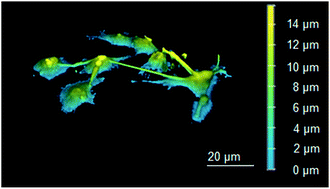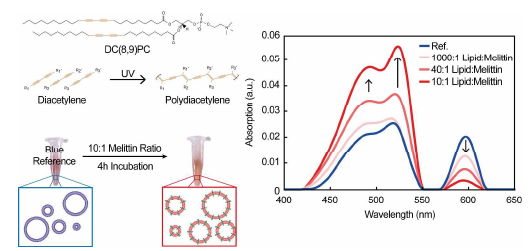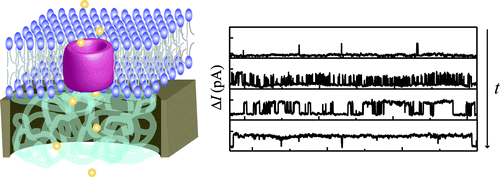-
Characterization of di-4-ANEPPS with nano-black lipid membranes
M. Tsemperouli and K. Sugihara
Nanoscale, in press (2017)


DOI:10.1039/C7NR05863B | Abstract | Article PDF | Supporting Info
We report a platform based on lateral nano-BLMs, where electrical measurements and fluorescence microscopy setup are combined, for the calibration of di-4-ANEPPS, a common voltage sensitive dye (VSD). The advantage of the setup is 1) its flexibility in the choice of lipids and the applied voltages, 2) its high stability that enables high voltage (500 mV) application and long time measurements, and 3) its fluorescence microscopy readout, which can be directly correlated with other fluorescence microscopy experiments using VSDs (e.g. membrane potential measurements in living cells). Using the setup, we observed that the calibration curve of di-4-ANEPPS highly depends on the net electric charge of the lipids. The developed setup can be used to calibrate VSDs in different lipid environment for understanding their fundamental voltage-sensing mechanism in future.













